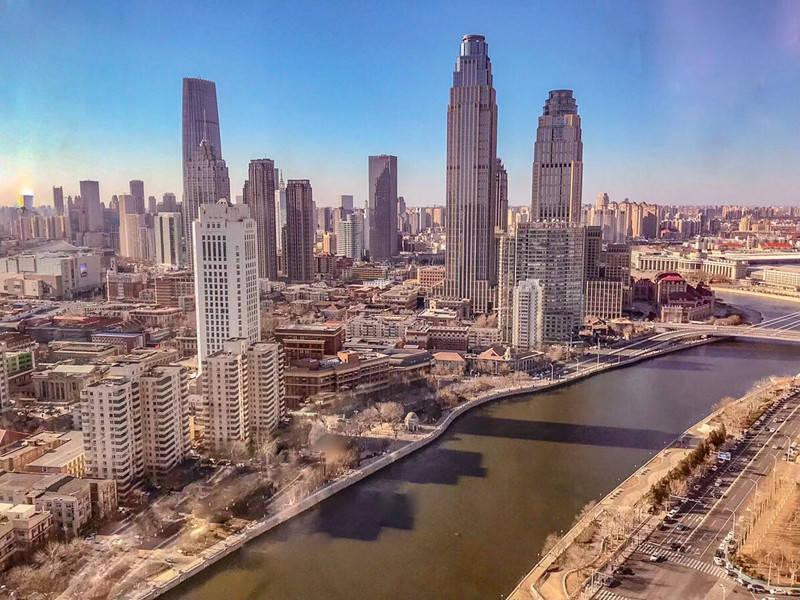
Tianjin and the Haihe River
'Absence makes the heart grow fonder'. A popular saying that when separated by time or distance, the desire to return to a person or a place with which you are very fond of can grow stronger over time. Then, the moment of return arrives, bringing with it a sense of happiness, a feeling of at last, a reunion is possible.
Tianjin, northern China’s municipality is located close to the Bohai Sea. Over the years I have photographed, documented and got to know so much particularly of its urban districts. Yes a passion for Tianjin steadily built up but for various reasons, I was separated from the city for fourteen months. Regularly I had travelled down from Beijing several times yearly, but after November 2021, that stopped. Many times looking at my extensive photo archive on Tianjin, I pined to return, but when? Recently I was finally back on a high-speed train racing south from Beijing at 350 km/hr. That journey of 117 km takes only 30 minutes. Watching many familiar landmarks pass by, then as the modern skyline close to Tianjin Railway Station came into view, I knew I was back!
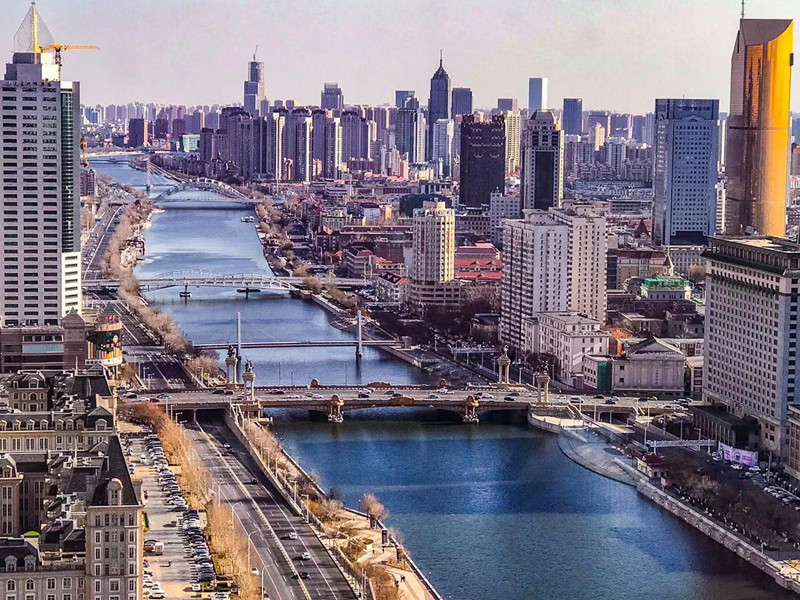
Tianjin and the Haihe River
A quick transfer onto Metro Line 9, a few minutes later I arrived at the city’s Shangri-La Hotel. Somewhere I have stayed regularly and a hotel where a previous general manager Jason Stinson gave me considerable encouragement to do more with photographing Tianjin. Indeed in 2018 an exhibition of that photography was held there.This time on arrival, many staff members greeted me like one of the family returned.
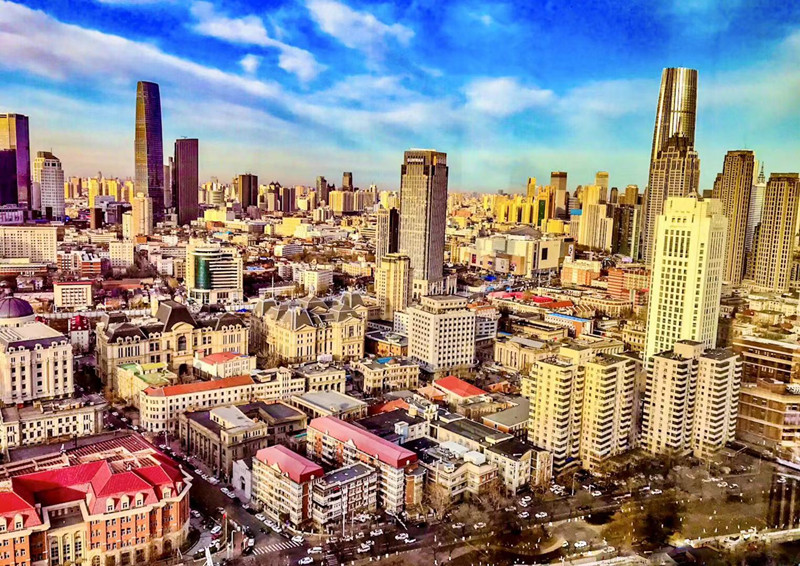
Looking across former French concession area towards Tianjin modern skyline
Heading up to the 32nd floor lounge, with its panoramic windows, I sat with a coffee looking out over the city. Below stretched the Haihe River it’s formerly thick covering of winter ice steadily melting. Sitting there I thought about the city and what makes it so special, so different that I keep returning. The river itself, once a busy shipping lane connecting the Grand Canal with the ocean. A vital element in bringing considerable prosperity to the city through historic times. The river was a factor also in the establishment of international concession districts in Tianjin between 1860 and 1945. That period left a legacy of some outstanding architecture reflecting the various nations that had established their presence in Tianjin. It remains an asset today in creating parts of the city into ‘must see’ destinations for the increasing numbers of tourists visiting the city.
Soon, I was out walking over Jinhui Bridge directly below the hotel before heading towards nearby Jiefang North Road. I desired to immerse myself again in some of Tianjin’s history. During the concession period, this road became the focus of many international financial, business and trading companies. By the 1920’s it was known as Asia’s ‘First Wall Street’ in recognition of its growing importance both in China and indeed, worldwide. An architecturally beautiful avenue to walk along, some of the buildings today are home to leading domestic banks, retaining the magnificent interior design from earlier eras. I continued wandering amidst more history before reaching Heping Lu’s bustling commercial area from where I took a metro back to the hotel.
Several significant changes had occurred in Tianjin during my absence which I desired to experience. One has been the opening of Metro Line 4. An amazing piece of engineering, several of its spacious stations are mini-museums in themselves recalling the history and architectural heritage of areas close to the stations. That line carried me to Liuweilu Station where there is a display about the Haihe. Immediately outside sits a recently opened shopping, dining and leisure complex, The Splendors City (Jinmao Place Hui), and well worth visiting. It occupies the former Tianjin Power Plant building, dating from 1937. The interior today is surely a model for sustainable urban renewal.
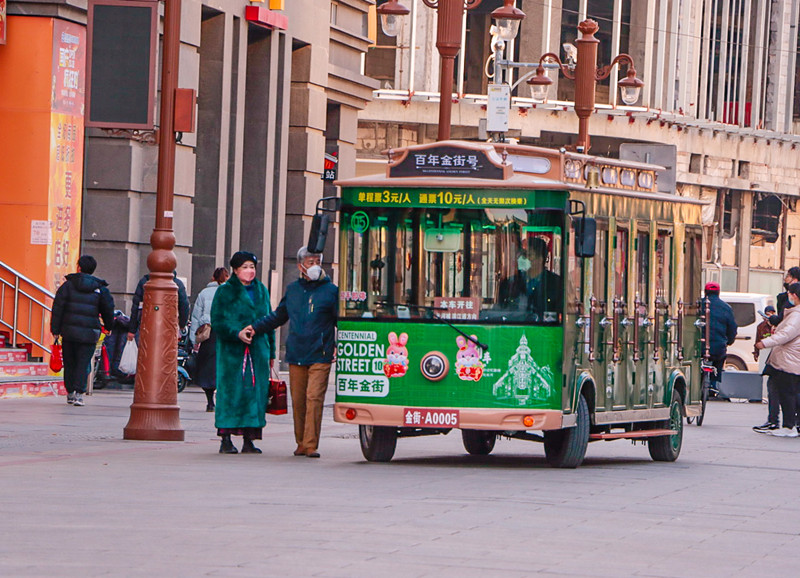
The ‘Dangdangche’ is today a popular attraction along Jin Jie, Tianjin’s ‘Golden Street’
The metro carried me onwards, under the Haihe, eventually arriving at Jin Jie (Golden Street) . Displays within that station reflect its bustling commercial activity during earlier days of the 20th century, including information on its grand buildings. Today, considerable work is underway to restore some of the area’s former glory.
Close to the station rise some of that period’s stunning architecture including 1911 opened Tianjin Department Store. Several recent structures have been constructed in styles that reflect the area’s earlier history. Jin Jie itself pedestrianised, forming part of a lengthy walking area that includes Binjiang Dao, one of China’s first such concepts. A recent attraction running along this historical corridor is the ‘Dangdangche’ - a reminder of Tianjin’s earlier street cars, once a common sight along Tianjin’s fine avenues. Indeed some roads then even had a Parisian resemblance, particularly within the former French concession district.
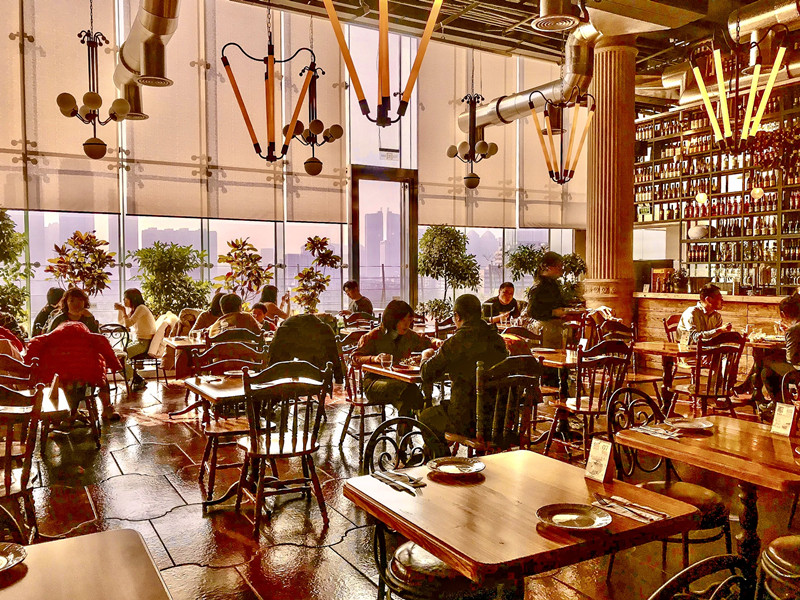
Tianjin’s international dining scene - Pizza Bianca offers excellent views over Jin Jie (Golden Street)
During my time in Tianjin it was a pleasure and indeed an honour to spend several days with a film production team from Tianjin Media Group (TMG). We were exploring parts of the downtown area which I have had a long passion for and where much of my photography was taken.This proved an opportunity to speak at length about Tianjin, reflecting on its history and how I have watched the city develop.
One location was at the junction of the Grand Canal’s north and south branches where they intersect with the Haihe River - today local people quietly fish there which was once at the heart of the older city’s commercial world, indeed long before the concession areas were founded.
As a railway fan, an unforgettable moment was visiting Tianjin Railway Station to take a high-seed train the short distance to Wuqing. Wuqing, in recent years, has become a major residential area for commuters to both Tianjin and Beijing. On board I reflected about travelling on one of the very first such trains between Beijing and Tianjin in August 2008. I would learn during that visit more about expansion of the railway network around Tianjin. This will include a link presently under construction between Tianjin West Station and Daxing International Airport, with onward travel to Beijing West.
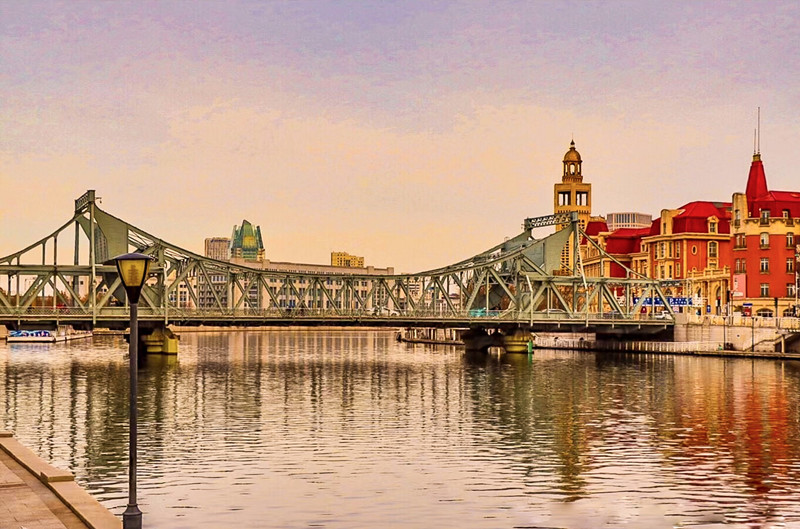
Jiefang Bridge and Haihe River - an historic icon of Tianjin
Filming also occurred at Wudadao with its delightful tree-lined boulevards and and villa-like residences where many famed people stayed in the early 20th century. There, at Minyuan Stadium we visited ‘Five Avenues’ History Museum where I was shown around by a very knowledgeable Tianjin lady, Liu Chunfen. What was particularly fascinating for me was a section featuring a ‘Son of Tianjin’, Eric Liddell, known as ‘The Flying Scotsman’ and gold medal winner during the Paris 1924 Olympic Games. Liddell was born in Tianjin on January 16 1908 to Scottish parents. After his years both studying at Scotland’s University of Edinburgh and participating in the Olympics, he returned to China, where his heart and passion was.
Wudadao is particularly busy at the weekends with many, mostly younger people coming to enjoy its tranquility, great cafes and restaurants. For me, a superb area to do more photography. Indeed while there I noticed again how much busier Tianjin has become now that travel has restarted.
One other fascinating location for filming was the antique market along Shenyang Road, deep within the narrower lanes of Old Tianjin. Great fun chatting with the stall holders discussing about what many of the artifacts on sale were and how much they cost, although I was not buying, simply talking for the filming!
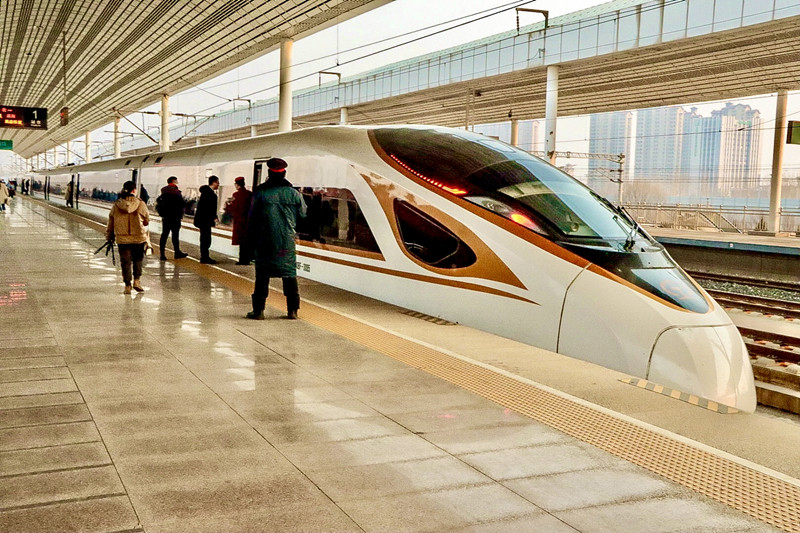
Wuqing Railway Station with train about to depart towards Tianjin
Tianjin today offers many excellent dining experiences. I was taken to a traditional local restaurant at Wudadao within a former villa, to sample some delicious local specialities. However, there were new restaurants opening which have added to the attractiveness of the city for visitors. One, an increasingly popular pizza restaurant at Riverside 66 Mall, was for me particularly interesting with its outdoor terrace offering views down onto Jin Jie. To my joy, the DangDang Che ringing its distinctive bell proceeded below where I was standing.
During my time in Tianjin, noticeably winter was giving way to spring. Migratory gulls were returning to the Haihe on their annual stopover from warmer winter stays in east central China as they head back up to northern Russia. Indeed for me, the gulls are just one of the many attractions I would watch and photograph while walking along the landscaped banks of the river. Indeed photographs along the Haihe will feature prominently in a forthcoming photo exhibition based on my work recording many aspects of this city.
Although I have visited Tianjin many times, it was indeed pleasurable to be back in the city. It was also fulfilling to share my work and experiences in a way hopefully that will help increase an awareness of Tianjin. A city where throughout periods of its history, east meets west as can be seen from its stunning architecture.
It is true that ‘absence does make the heart feel fonder’. However I hope now I will not be away from Tianjin for any lengthy period again. Indeed this visit I felt indeed brought me closer than ever to Tianjin and it’s people.





